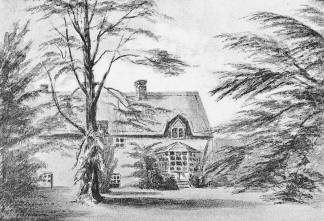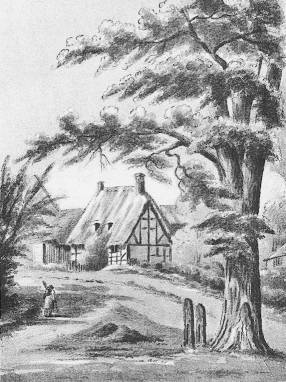
Launch of Finmere and Little Tingewick Historical Society
Newsletter 1. October 1996.
COME TO THE FHS OPEN DAY
Bring your memories and photographs,
or just come and browse on SUNDAY,
20 OCTOBER, 2.00PM, VILLAGE HALL.
Welcome to the first newsletter of the Finmere and Little Tingewick Historical Society.
FHS is an informal society formed to research the history of Finmere, Little Tingewick and nearby settlements. We want to be a 'working society', actively researching and recording the history of the village and surrounding area, right up to yesterday. Among the activities we plan are:
We also hope to produce a new History of Finmere for the Millennium (the last was written by the Rector of Launton in 1886).
There is no formal membership for FHS and no joining fee. If you would like to help us or find our more about what we are doing, please contact:
Andy Boddington
In the N-E extremity of Oxfordshire, about four miles west of Buckingham stands a little village ... I learned to love it and its people very dearly: yet truth constrains me to admit that a humbler village one has seldom seen.
The church was singularly deficient in architectural beauty. The School might have been mistaken for a cottage. The Rectory house, a very "modest mansion" indeed, was thatched and a single story high. (see below)
The road through the village was decidedly bad: moreover, the pathway in front of the village was so irregularly pitched, that after dusk no-one but a native could walk securely. The tenements which skirted the public way were for the most part a truly lowly type.
And yet, when you come to know Finmere better, you grow conscious that the village was both picturesque and interesting.
Humble as the cottages were, few, if any, were dilapidated. There was an air of cleanliness, of decency, even of comfort about the place and about the people.
Squalid poverty there was none. The peasantry behaved respectfully to strangers.
These words were written by the Dean of Chichester in 1886, thirty years after he was Rector at Finmere (1851-3).
At that time, Finmere had 89 houses and 399 inhabitants. The village had seven farmers, seven butchers and two blacksmiths. The brickworks, clayworks and mill all employed local residents. With the advent of the Great Central Railway, two coal merchants' businesses had been established but only 18 lace makers remained of the 98 women and 48 girls engaged in the craft 25 years before.
Anita Bilbo and Andy Boddington

The Rectory in the mid-19th century

The Cross Tree and stocks looking towards Water Stratford Lane (c. 1886)
According to the English Place Name Society, Finmere means "pool frequented by woodpeckers" but many think the name is a corruption of Fen-Mere or Fen-Moor.
When I moved to Finmere, my first question relating to Finmere Airfield, and unanswered until now, was "what aircraft were housed here during WW2?" We can now relate that it was used primarily by the RAF as a training ground for notably Blenheim, Boston and eventually Mosquito crews for eventual ferrying to North Africa and the Far East.
Originally used as a landing ground, it was not really established as an airfield until 1942, when the locals would have spotted Wellingtons, Havocs, Mitchells and Tempests in the skies above Finmere. In April 1945, there were as many as 47 Mosquitos on the airfield.
A fuller report and display will be on view at the Open Day. If anyone has information, photographs, stories or memories of the airfield, please contact me.
Barry Cranfield
The old Roman Road which borders our two villages is only a small part of a huge networks of roads once stretching from Hadrian's Wall to Ceylon. This second class road, probably not paved but its route still identifiable by a hedgerow, ran from Alchester to Towcester. I hope to trace its escape from development since the Roman occupation and answer the question, can Finmere/Little Tingewick be 2000 years old?
Maria Reay

In 1991, the population of Finmere parish was 178 men and 186 women. There were 274 adults, 194 of whom were married.
Andy Boddington
SUNDAY 20 OCTOBER 1996, 2.00-5.00PM AT THE VILLAGE HALL.
Our Open Day is an invitation to everyone to come and chat about Finmere's history. There will be an Exhibition with stories and photographs of Finmere old and new, including:
Whether you are an established resident or new to the village please come along with your photographs and memories, or just pop in for a cup of tea.